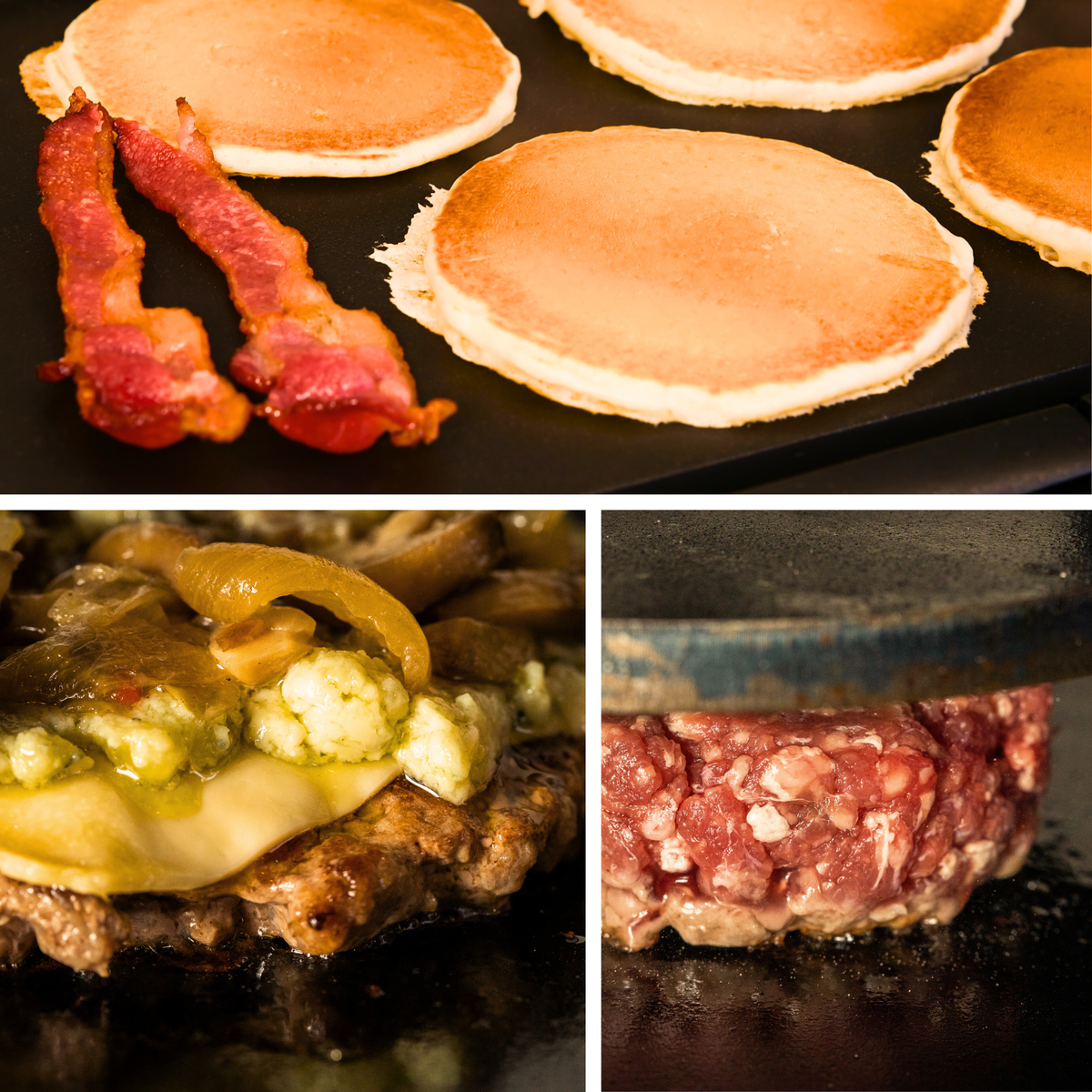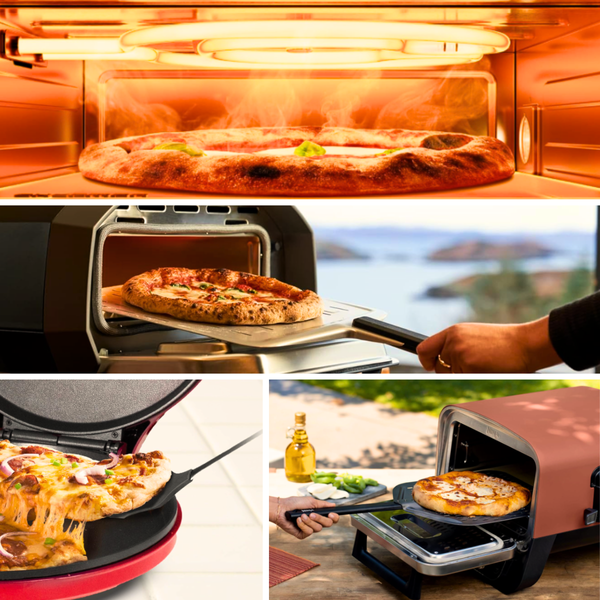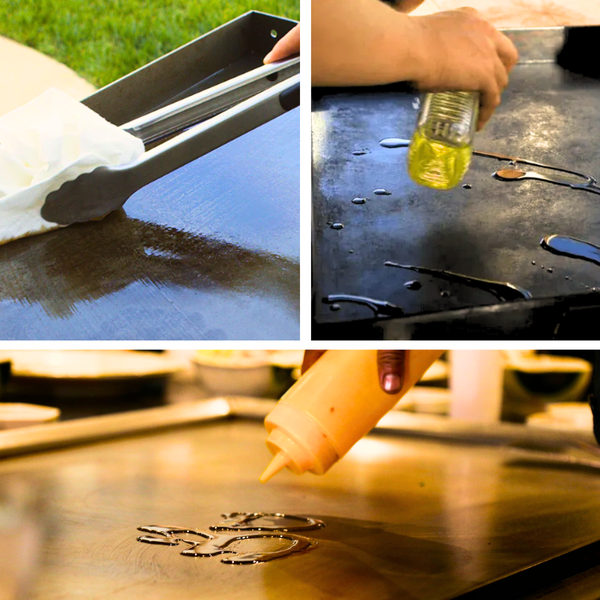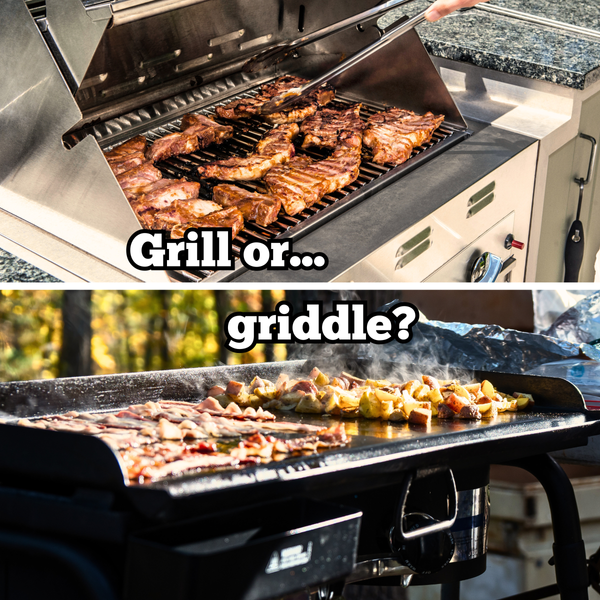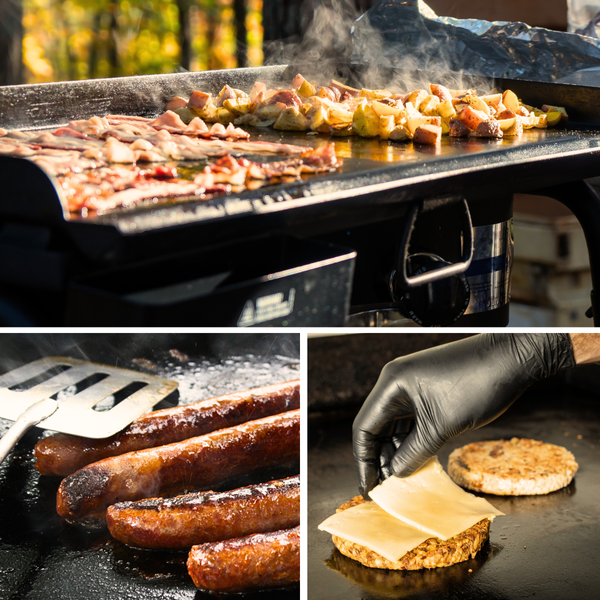Flat top grills have become a staple in both outdoor and indoor cooking environments, celebrated for their versatility and ease of use. They're fantastic for whipping up everything from fried rice to grilled cheese sandwiches. However, like any cooking appliance, they come with their own set of drawbacks. In this comprehensive guide, we'll explore the disadvantages of a flat top grill, ensuring you're well-informed before you start cooking your next meal.
Key Takeaways:
- Flat top grills may lack the charred flavor associated with traditional grill grates.
- Maintenance and cleaning can be more labor-intensive due to the large cooking surface.
- Uneven heat distribution and the need for frequent seasoning are common issues.
Limited Flavor Profile
One of the most significant disadvantages of a flat top grill is the flavor profile. Traditional grills with grill grates are known for imparting a smoky, charred flavor to grilled food, which is hard to replicate on a flat cooking surface. The direct flame contact on a traditional grill creates those coveted grill marks and a distinct taste that many barbecue enthusiasts crave.
Difficulty in Achieving Grill Marks
Speaking of grill marks, achieving them on a flat top griddle is virtually impossible. Grill marks are not just about aesthetics; they contribute to the flavor and texture of the food. On a flat surface, food cooked does not get the same sear as it would on a traditional grill, which can be a downside for those who enjoy the visual and taste appeal of perfectly marked steaks or hot dogs.
Cleaning and Maintenance
The large cooking surface of flat top grills can be a double-edged sword. While it allows you to cook large quantities of food or multiple dishes simultaneously, it also means there's more area to clean. Grease and food residue can build up quickly, and without proper cleaning, this can affect the taste of your next cooking session. The use of paper towels, grease traps, and frequent seasoning is necessary to maintain a well-seasoned griddle.
Frequent Seasoning Required
A flat top griddle, especially those made from cast iron or carbon steel, requires frequent seasoning to maintain a non-stick surface and prevent food from sticking. This process involves coating the griddle surface with oil, such as extra virgin olive oil or bacon grease, and heating it to create a protective layer. Neglecting this step can lead to rust and a degradation of the cooking surface.
Uneven Heat Distribution
Even heat distribution is crucial for cooking dishes evenly, but not all flat top grills manage this effectively. Some models, particularly large ones, may have heat zones that are hotter or cooler than others. This can result in some areas of the grill cooking faster than others, requiring the cook to move food around for even cooking.
Limited to Certain Foods
While flat top grills are versatile, they're not ideal for all types of food. Fatty foods can cause flare-ups, and without grill grates, the fat has nowhere to go but onto the flat surface, which can create a greasy, smoky mess. Additionally, foods that benefit from the flavor of a flame, like certain meats, may not fare as well on a flat top.
Requires Constant Attention
Cooking on a flat top grill often requires constant attention. Since the food is in direct contact with the heat source, it can go from perfectly cooked to overdone in just a few minutes. This means the cook must be vigilant, especially when preparing dishes that require precise cooking times, like scrambled eggs or hash browns.
Griddle Pros and Cons for Different Dishes
When it comes to cooking different dishes, the flat top grill, often referred to as an outdoor griddle, has its griddle pros and cons. For instance, dishes like smash burgers and stir fry excel on a well-seasoned griddle. The entire surface heats evenly, providing a consistent cook that's ideal for achieving that perfect sear on your burgers or quickly tossing and sautéing veggies. The expansive cooking area allows for multiple dishes to be prepared simultaneously, which is a boon for entertaining or feeding a large family.
However, not all dishes fare well on a flat top grill. Delicate items that require specific temperature control can be challenging, as the griddle thermometer might not offer the precision needed compared to traditional gas grills. Additionally, while Blackstone griddles and similar models are fantastic for certain types of food, they may not be the best choice for traditional grilling favorites like steaks or ribs that benefit from the high heat and grill marks of a conventional grill grate.
Inconvenience in Temperature Control
When it comes to cooking on a flat top grill, such as the popular Blackstone griddle, one of the challenges you might face is the inconvenience in temperature control. Unlike a traditional gas grill, where you can easily adjust the heat for different sections, a flat top grill often requires more finesse to maintain the right temperature. This can be particularly tricky when you're trying to sauté veggies alongside cooking a smash burger. You need the veggies to cook at a lower temperature to avoid burning, while the burger requires a high heat to achieve that perfect crust.
Moreover, a well-seasoned griddle is essential for optimal temperature control. Seasoning acts as a natural non-stick layer and helps to distribute heat more evenly. However, if the seasoning is uneven or worn off in places, you might find hot spots that can lead to inconsistent cooking. This is especially problematic when preparing delicate items that require precise temperatures. Therefore, it's crucial to keep your griddle well-maintained to avoid these temperature control issues.
Not Ideal for Healthy Eating
For those focused on healthy eating, flat top grills can be a bit of a challenge. They often require the use of oils to prevent sticking and to create a crispy exterior on foods. While healthy oils can be used, the amount needed can add up, potentially increasing the calorie and fat content of the food.
Space and Portability
Flat top grills, particularly large models with multiple gas burners, can take up a significant amount of space. This can be a disadvantage for those with limited outdoor kitchen space or for those who prefer a portable cooking option. Additionally, if you're using a gas-powered model, you'll need to consider the space for propane tanks or access to natural gas lines.
High Energy Consumption
Flat top grills, especially gas griddles, can consume a significant amount of heat energy. This can be a concern for both environmental reasons and cost. Electric griddles might offer a more energy-efficient alternative, but they often lack the power and size of their gas counterparts.
Metal Utensil Restrictions
The griddle surface of flat top grills can be sensitive to scratches, which means you have to be careful with the type of utensils you use. Metal utensils can damage the seasoning layer or even the metal surface itself, leading to rust and other issues. This requires the cook to use softer materials like wood or silicone, which may not be as effective for certain cooking techniques.
Lack of Smoky Flavor
Many outdoor cooking enthusiasts prefer the smoky flavor that comes from cooking over an open flame. Flat top grills, with their enclosed gas burners and steel griddles, can't impart the same smoky essence to food. This can be a significant disadvantage for those who enjoy the traditional taste of backyard cooking.
Incompatibility with Certain Cookware
Not all cookware is suitable for use on a flat top griddle. The flat cooking surface is designed for direct contact with food, so using pots and pans, like a frying pan or a saucepan, is not always practical. This limits the types of dishes you can prepare and may require additional cooking appliances for certain recipes.
Risk of Grease Fires
The accumulation of grease is a common issue with flat top grills. If not properly managed, the grease trap can overflow, leading to the risk of grease fires. This is a significant safety concern and requires the cook to be diligent about cleaning and maintaining the grease management system.
Limited to Outdoor Use
While there are indoor electric griddles available, many flat top grills are designed for outdoor use only. This means that during inclement weather or for those without outdoor space, using a flat top grill is not an option. This can be a considerable disadvantage for apartment dwellers or those who enjoy grilling year-round.
Adaptability for Indoor Use
While flat top grills are often associated with outdoor cooking, there's a growing trend of incorporating them into the kitchen countertop. This shift brings the convenience of grilling indoors, allowing you to enjoy grilled flavors year-round, regardless of the weather. The Blackstone griddle, for instance, can be a versatile addition to your indoor kitchen, enabling you to cook a variety of dishes from smash burgers to sautéed veggies without stepping outside.
However, using a flat top grill indoors requires proper ventilation to handle the smoke and grease that can be produced while cooking. Without an adequate range hood or ventilation system, you might find your kitchen becoming smoky and smelling like the last meal you cooked. Additionally, the size of the griddle needs to be considered to ensure it fits comfortably on your kitchen countertop without taking up too much space. With the right setup, a flat top grill can be a fantastic indoor cooking appliance, but it's important to address these considerations for a seamless integration into your home kitchen.
Maintenance and Cooking Tips for Flat Top Grills
Maintaining a flat top grill requires a bit more than just a paper towel swipe. A well-seasoned griddle is crucial for both non-stick cooking and flavor. After each use, it's important to clean the surface with a grill-specific cleaner or a mixture of water and vinegar, then re-oil the surface to protect it. This routine helps prevent rust and ensures that your griddle remains in top condition for the next cookout.
Cooking on a flat top grill like the Pit Boss or Blackstone griddles also demands a certain level of finesse. For example, when cooking foods that release a lot of grease, it's essential to manage the grease properly to avoid flare-ups and ensure even cooking. Using the right tools, such as spatulas and scrapers designed for flat top grills, can make a significant difference in the ease of cooking and the quality of the food. Remember, the key to perfecting dishes on a flat top grill is understanding the heat zones and managing the entire surface effectively.
Summary
Flat top grills offer a unique and versatile cooking experience, but they come with a few downsides that are important to consider. From the lack of a smoky, charred flavor to the need for frequent cleaning and seasoning, these disadvantages can affect your overall cooking experience. Additionally, uneven heat distribution, the requirement for constant attention, and the potential for grease fires are factors that require careful consideration. While flat top grills can be a fantastic addition to any outdoor kitchen, being aware of these drawbacks will help you make the most informed decision for your cooking needs.
FAQ Section
Q: Can I get grill marks on a flat top grill?
A: No, flat top grills do not typically produce grill marks because they have a flat cooking surface rather than raised grates.
Q: Is it difficult to clean a flat top grill?
A: Cleaning a flat top grill can be more labor-intensive than cleaning traditional grills due to the large surface area. Regular maintenance, including using paper towels to wipe down the surface and cleaning the grease trap, is necessary.
Q: Can I cook all types of food on a flat top grill?
A: While flat top grills are versatile, they are not ideal for all types of food. Foods that require a smoky flavor or that are very fatty may not cook as well on a flat top grill compared to a traditional grill with grates.



